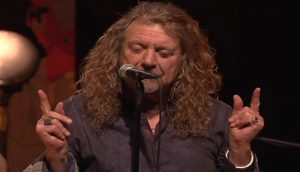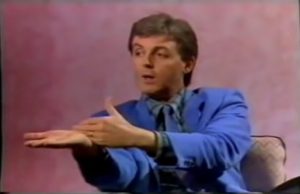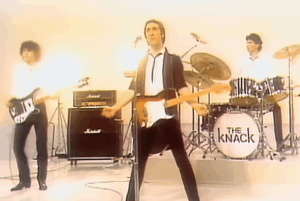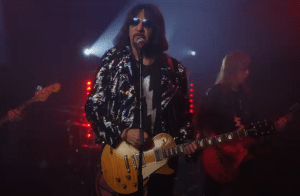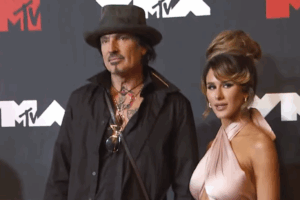20 1980s Hidden Gems You Probably Never Heard Of
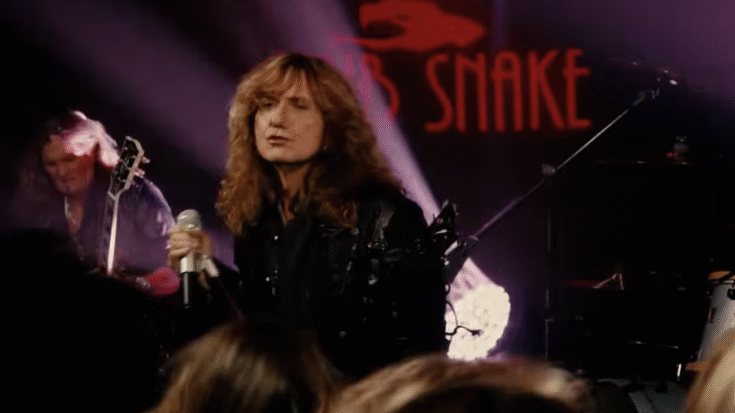
via Frontiers Music srl / YouTube
The 1980s weren’t just about neon lights, big hair, and chart-topping hits — beneath the surface was a rich world of overlooked songs waiting to be rediscovered. While the airwaves were dominated by mega-hits from household names, an entire layer of music quietly thrived in the shadows, offering inventive sounds, bold experiments, and emotional depth that never quite got their due.
Some of these tracks came from artists who only brushed fame before fading into obscurity, while others were hidden deep in albums overshadowed by a single breakout hit. They weren’t necessarily made for the dance floor or radio playlists, but they’ve stood the test of time in their own quiet, enduring ways. These are the songs that lived in mixtapes, record store recommendations, and late-night college radio slots.
This list is for the curious listener — someone looking beyond the usual 80s nostalgia to find the strange, soulful, and sonically surprising songs that slipped under the radar. Whether you’re hearing them for the first time or remembering something you thought you’d forgotten, these 20 hidden gems deserve another spin.
20. “Only Lonely”, Bon Jovi (7800° Fahrenheit, 1985)
Bon Jovi’s reputation as arena rock royalty doesn’t mean every track they’ve released became an instant hit. “Only Lonely” originally flew under the radar when it debuted on their second album, 7800° Fahrenheit, an effort that leaned more into atmospheric textures than radio-ready rockers. It showcased a darker, more experimental sound compared to the band’s later, more polished hits.
The track’s cinematic qualities, especially in the accompanying music video, gave it a brooding, theatrical edge. The chorus is pure fire — emotionally raw, with Jon Bon Jovi channeling a mix of longing and frustration that’s hard to shake off. It’s the kind of performance that demands a second look, especially for fans who came in post-Slippery When Wet.
Decades later, “Only Lonely” is enjoying a slow revival, with nostalgic fans and younger listeners rediscovering its moody brilliance. It’s featured on curated playlists and retrospectives that dig deeper than the usual Bon Jovi fare, proving it has the staying power to finally earn the spotlight it was denied back in the day.
19. “Self Control”, Laura Branigan (Self Control, 1984)
Originally an Italian dance track by Raf, “Self Control” gained new life thanks to Laura Branigan’s powerhouse cover. While Raf’s version found success in Europe, Branigan’s take brought the song to American audiences, transforming it with dramatic flair and high-octane production. It’s a perfect blend of Italo-disco foundation and pop-rock muscle.
Branigan’s voice carries the weight of the song, effortlessly rising above layers of shimmering synths and tight guitar work. Her interpretation feels urgent and emotionally charged, enhancing the darker themes of the lyrics. The result is a track that’s as catchy as it is haunting, striking a balance between radio polish and nightclub energy.
In recent years, “Self Control” has found its way back into pop culture through film, television, and online nostalgia channels. Its irresistible chorus and retro-cool aesthetic have sparked renewed interest, ensuring it’s no longer just a forgotten hit — it’s a defining anthem of 80s excess and vulnerability.
18. “Dead Man’s Party”, Oingo Boingo (Dead Man’s Party, 1985)
Before Danny Elfman became Hollywood’s go-to composer, he fronted one of the most eclectic bands of the 80s: Oingo Boingo. Their song “Dead Man’s Party” perfectly encapsulates the group’s offbeat charm and spooky charisma. Originally featured on their 1985 album of the same name, the track also landed in the 1986 film Back to School starring Rodney Dangerfield.
Musically, the song is an adrenaline shot of funky basslines, jittery horns, and Elfman’s theatrical vocal delivery. It doesn’t fit neatly into any genre box, instead blending ska, rock, and new wave into a macabre celebration. It’s equal parts Halloween dance track and existential groove, which is probably why it’s had trouble finding a mass audience — until now.
Thanks to curated Halloween playlists, TikTok edits, and renewed interest in Elfman’s early career, “Dead Man’s Party” has staged a comeback. It’s become a cult favorite among those who want something more eccentric than “Thriller” but just as danceable. This song’s resurrection is well deserved.
17. “Message of Love”, The Pretenders (Pretenders II, 1981)
“Message of Love” wasn’t The Pretenders’ biggest hit, but it perfectly embodies what made the band special: raw energy, unexpected tenderness, and Chrissie Hynde’s effortlessly cool delivery. Released on their second album, Pretenders II, the song didn’t catch fire at the time, overshadowed by earlier chart successes like “Brass in Pocket.”
Hynde’s vocal performance here is restrained yet confident, pairing minimalistic phrasing with sly lyricism. The track’s structure feels loose and breezy, with a rhythm section that dances around vintage rock-and-roll vibes while staying rooted in early-80s new wave. There’s something deceptively clever about how it’s put together — it’s a song that gets under your skin with repeated listens.
Over time, “Message of Love” has grown into a sleeper favorite for fans and critics alike. Its inclusion in retrospectives and “deep cut” playlists has given it a second wind, reminding listeners of The Pretenders’ breadth beyond their biggest singles. It’s a reminder that sometimes the most resonant messages are the ones that come quietly.
16. “Run With Us”, Lisa Lougheed (The Raccoons TV Soundtrack, 1987)
Canadian kids of the 80s knew this one well — “Run With Us” served as the theme for the beloved animated series The Raccoons. Performed by Lisa Lougheed, the song originally had a very niche audience but stuck with those who heard it, thanks to its emotional weight and distinctive production. It became a cult classic long before that term was trendy.
There’s a sincere, stirring quality to Lougheed’s vocals that gives the track a timeless feel. Paired with sweeping synths and a surprisingly dark undercurrent, “Run With Us” captures the magic and melancholy of growing up. Its message of unity and adventure gave the show a sense of heart that still resonates with those who watched it decades ago.
Now, thanks to the internet’s endless appetite for nostalgia, the song has enjoyed a resurgence. It’s shown up in synthwave compilations, throwback YouTube channels, and even DJ sets looking to tap into a more emotional 80s sound. “Run With Us” is no longer just a kids’ TV theme — it’s a rediscovered anthem for anyone craving earnestness in an ironic world.
15. “A Mission in Life”, Stan Ridgway (Mosquitos, 1989)
Stan Ridgway may not be a household name, but his distinct voice and narrative songwriting style left an imprint on the fringes of 80s music. Known previously as the frontman of Wall of Voodoo, Ridgway stepped into a more personal and introspective lane with his solo work. “A Mission in Life,” from his Mosquitos album, is a stripped-back piece that feels closer to piano-driven storytellers than the synth-laden post-punk he came from.
The song’s instrumentation is lush and cinematic, wrapping Ridgway’s unique vocal cadence in a warm, analog haze. There’s a storytelling weight to the lyrics — a sense of a man navigating regret, purpose, and the quiet search for meaning. It’s subtle, but powerful, and showcases just how flexible Ridgway’s talents truly are.
In recent years, the track has been re-embraced by longtime fans and curious newcomers diving deeper into his catalog. It’s a song that rewards patience, a slow-burn reflection that stands in stark contrast to the louder corners of 80s pop. If you missed it the first time around, now’s your chance to catch up.
14. “Wings of the Storm”, Whitesnake (Slip of the Tongue, 1989)
Tucked near the end of Slip of the Tongue, “Wings of the Storm” is easy to miss — but skipping it would mean overlooking one of Whitesnake’s most aggressive moments. The song strips away the band’s earlier blues influences in favor of full-throttle glam metal, carried by Steve Vai’s razor-sharp guitar work and relentless momentum.
From the opening riff, there’s no mistaking the intent. This isn’t a power ballad or a sultry arena anthem — it’s a pedal-to-the-floor rocker, showcasing the band’s ability to go fast and hard without sacrificing polish. David Coverdale matches the energy with soaring vocals that push his range and intensity, bringing a commanding presence to the track.
As the years have gone by, “Wings of the Storm” has emerged from the shadow of bigger Whitesnake singles like “Here I Go Again” and “Is This Love.” Modern fans and guitar aficionados alike have latched onto it, especially as Vai’s legacy continues to draw admiration. It’s a hidden gem for those who prefer their 80s rock with some bite.
13. “Eighties”, Killing Joke (Night Time, 1985)
“Eighties” by Killing Joke might be one of the most prophetic tracks to come out of the decade — both musically and culturally. The English band delivered a fierce blend of post-punk, proto-industrial, and alternative rock, and this track nails that chaotic fusion. It’s angular, it’s aggressive, and it refuses to sit quietly in any one genre.
There’s also been long-standing chatter about the song’s resemblance to Nirvana’s “Come As You Are,” especially the nearly identical main riff. Whether coincidence or not, it’s a testament to how ahead of its time “Eighties” really was. The militaristic drums and dystopian lyrics paint a vivid picture of the social climate, all wrapped in a darkly danceable groove.
Recently, “Eighties” has seen renewed attention thanks to documentary soundtracks, retrospective compilations, and comparisons to the grunge era it seemingly foreshadowed. Its resurgence isn’t fueled by nostalgia alone — it’s also about recognition. Killing Joke was doing something bold, and this song proves just how far their influence reached.
12. “But Not Tonight”, Depeche Mode (Black Celebration, 1986)
“But Not Tonight” may not have been the centerpiece of Black Celebration, but it offers a refreshingly optimistic contrast to the album’s darker themes. Originally released as a B-side in the UK and as a lead single in the U.S. for the film Modern Girls, the track has long lived in the shadows of bigger Depeche Mode hits — until now.
Musically, the song brings back the minimal, synth-driven charm of the band’s earlier era, paired with Dave Gahan’s emotive vocal work. It’s undeniably catchy, with a bright melodic arc and a slightly whimsical energy that hints at joy without ever losing the band’s signature edge. That balance makes it feel like a bridge between two phases of Depeche Mode’s evolution.
In recent years, “But Not Tonight” has found new life through fan-made videos, nostalgia-fueled playlists, and a broader reassessment of Black Celebration as a whole. It’s become a favorite among die-hards who appreciate its bittersweet optimism, and it’s finally earning the attention it’s always deserved.
11. “Don’t Pay the Ferryman”, Chris de Burgh (The Getaway, 1982)
Before “Lady in Red” cemented Chris de Burgh as a soft-rock balladeer, he released a fantastical, high-energy track that couldn’t be more different. “Don’t Pay the Ferryman” opens The Getaway with urgency and mystery, telling a dark tale steeped in myth and drama. It’s theatrical without being over-the-top — a sonic storybook with real stakes.
The production is pure 80s bombast, but in the best way: layers of synthesizers, driving percussion, and dramatic shifts in tone. De Burgh’s vocal performance is committed and commanding, narrating a warning-laden journey with Shakespearean gravitas. It’s a song that grabs you immediately and doesn’t let go.
In the streaming era, the track has gained traction among listeners seeking deep cuts that stray from genre conventions. It’s also found its way into Halloween playlists and fantasy-themed throwbacks, appealing to a new generation of listeners drawn to its eerie narrative and over-the-top charm. “Don’t Pay the Ferryman” is finally making its voyage back into relevance.
10. “When I’m Gone”, Albert Hammond (Your World and My World, 1981)
Albert Hammond is one of those rare artists whose name might not be on every casual listener’s radar, but whose songs have shaped countless lives. Known primarily as a songwriter for others, Hammond often kept his own performances out of the limelight. Yet “When I’m Gone” stands out as one of his most poignant solo recordings — an emotionally rich piece that tugs at the heartstrings with genuine vulnerability.
The production is lush and subtle, perfectly framing Hammond’s tender vocal delivery. There’s an almost timeless quality to the melody, while the lyrics unfold like a letter written to someone the narrator knows he’ll eventually leave behind. It’s a song that doesn’t try too hard to impress; instead, it wins you over with quiet sincerity and graceful simplicity.
Over the years, “When I’m Gone” has started to gain recognition from soft rock enthusiasts and collectors of lost gems. It’s one of those tracks that sounds familiar even if you’ve never heard it before — and once you do, you’re unlikely to forget it. A true under-the-radar masterpiece from a master of the craft.
9. “No Easy Way Out”, Robert Tepper (No Easy Way Out, 1986)
Few moments in cinematic history scream “80s intensity” quite like Rocky jumping in his car to reflect on life in Rocky IV, and it’s Robert Tepper’s “No Easy Way Out” that fuels that montage with white-hot passion. The song isn’t just a product of its time — it defines its time. With relentless energy and unapologetic earnestness, it became the ultimate soundtrack for determination and emotional grit.
Tepper delivers his vocals with such conviction that you almost forget how meticulously arranged the music is beneath him. It’s big, brash, and built for dramatic storytelling — with pounding drums, soaring synths, and one of the most motivational choruses of the decade. The production is classic 80s, but the spirit behind it is evergreen.
Thanks to the enduring popularity of the Rocky franchise and the rise of “training montage” nostalgia on platforms like YouTube, “No Easy Way Out” has re-entered the cultural consciousness. It’s not just background music anymore — it’s an anthem. And if you’ve got something to prove, this one still hits like a freight train.
8. “Age of Consent”, New Order (Power, Corruption & Lies, 1983)
New Order had a lot to live up to following the tragic end of Joy Division, but they managed to redefine their sound and, in the process, reshape the direction of post-punk and synth-pop. “Age of Consent” is an early standout from their 1983 album Power, Corruption & Lies, and it captures the moment where melancholy met momentum in all the right ways.
The track opens with one of the most infectious basslines of the decade, setting the stage for shimmering guitars and Bernard Sumner’s distinctively emotive vocals. The lyrics are tinged with longing and distance, but the music pulses forward with energy — a sonic contradiction that works beautifully. It’s contemplative and danceable in equal measure.
Over time, “Age of Consent” has found a second life in film soundtracks, indie compilations, and vinyl reissues. It’s a touchstone for anyone looking to understand how the 80s balanced darkness with light, and why New Order became so influential. This track, once overlooked, now feels like a blueprint for everything that came after.
7. “Cambodia”, Kim Wilde (Select, 1982)
Kim Wilde burst onto the scene with “Kids in America,” but her follow-up material took a more adventurous route — none more so than “Cambodia,” from her 1982 album Select. This track is a brooding slice of synth-pop noir, loaded with Cold War paranoia, mysterious atmosphere, and a story that unfolds like a ghostly short film.
The production leans into haunting electronics and minimalist percussion, giving Wilde’s voice the space to shine with a spectral elegance. Her delivery is subdued but captivating, matching the song’s tone of subtle dread. It’s a world away from bubblegum pop, and all the more compelling for it.
Though “Cambodia” was a hit in parts of Europe, it remained relatively obscure elsewhere — until recently. Its eerie vibe and moody aesthetics have made it a favorite among retro synthwave fans and vinyl collectors. For those willing to dig deeper than the hits, “Cambodia” is an unforgettable detour into Wilde’s darker, more artful side.
6. “It’s a Sin”, Pet Shop Boys (Actually, 1987)
“It’s a Sin” might’ve once felt like just another Pet Shop Boys single, but over time, it’s grown into something much bigger — an anthem of rebellion, identity, and emotional catharsis. Written by Neil Tennant as a reflection on his strict Catholic school upbringing, the track has taken on deeply personal significance for many listeners around the world.
Musically, it’s a tour de force. Massive synths crash like thunder behind Tennant’s impassioned vocals, delivering lyrics that wrestle with guilt, shame, and the search for self. It’s dramatic, it’s theatrical, and yes — it absolutely rocks. Tennant himself once compared the track’s energy to heavy metal, and that unexpected comparison actually makes perfect sense.
Decades later, “It’s a Sin” has only grown in cultural impact. It’s been covered, remixed, and even adapted into the title of a critically acclaimed TV series. What began as a personal statement has become a universal rallying cry — proving that some songs don’t just age well, they grow stronger with time.
5. “Dancing with Tears in My Eyes”, Ultravox (Lament, 1984)
Ultravox had already carved out a name for themselves in the New Wave scene by the time “Dancing with Tears in My Eyes” was released, but this track stands out as one of their most emotionally resonant. There’s something both grandiose and intimate about it — a juxtaposition of global-scale dread and personal heartbreak, wrapped in pristine 1980s synth-pop production.
Midge Ure’s vocal performance elevates the track into something almost theatrical. His voice rides above cascading synths and pulsing drum machines, bringing a sense of tragic dignity to the song’s doomsday theme. There’s no irony here — Ultravox wore their drama proudly, and it pays off in spades on this track.
In the years since its release, “Dancing with Tears in My Eyes” has become a cult favorite for fans of emotive, cinematic pop. It continues to resurface on retro playlists and synthwave compilations, reclaiming its spot as a defining track of the era’s richly expressive songwriting.
4. “Ride Like the Wind”, Christopher Cross (Christopher Cross, 1980)
Before Christopher Cross became synonymous with smooth yacht rock, he burst onto the scene with “Ride Like the Wind” — a dynamic, genre-blending hit that sounded like nothing else at the time. The track has all the hallmarks of a classic: impeccable arrangement, catchy hooks, and that unmistakable sense of open-road freedom.
What really sets the song apart, however, is the interplay between Cross’s laid-back vocals and Michael McDonald’s unmistakable harmonies. McDonald adds soulful depth to the chorus, lending weight and texture to a song that might otherwise drift into soft rock oblivion. Together, they create a track that’s breezy but never boring.
Though it was a hit upon release, “Ride Like the Wind” has since taken on new life as a go-to nostalgic anthem. It continues to earn love from both original fans and a younger audience discovering it through soundtracks, memes, and yacht rock playlists. There’s just no denying its effortless cool.
3. “Wild, Wild West”, The Escape Club (Wild Wild West, 1988)
The Escape Club’s “Wild, Wild West” is one of those rare songs that feels like a time capsule — not just of its release year, but of the entire 80s aesthetic. Funky, strange, and unapologetically synthetic, the song leans into the surreal side of pop with wild abandon. It’s the kind of track that makes you feel like you’re living inside a music video.
The band hails from the UK, but their success with “Wild, Wild West” came mostly from the U.S., where its offbeat vibe and genre-blending approach struck a chord. The song mixes dance beats, rock guitar, and just a touch of new wave flair, creating something that sounds like Duran Duran on a sugar rush.
Today, “Wild, Wild West” has become a cult favorite among lovers of quirky pop. It resurfaces often on retro pop playlists, reminding us that sometimes the weirdest songs are the ones that stick with you longest. The Escape Club may not have had many hits, but this one left a mark.
2. “Kayleigh”, Marillion (Misplaced Childhood, 1985)
“Kayleigh” marked a surprising — and wildly successful — pivot for Marillion, a band that had built its name on sprawling, conceptual prog rock. Clocking in at just under four minutes, the song condensed the band’s emotional storytelling into a radio-friendly single that resonated with a broader audience without sacrificing their artistic identity.
Lead singer Fish delivers the lyrics with raw honesty, drawing from real-life heartbreak to craft something both personal and universal. The song’s standout feature, though, is the melodic guitar work of Steve Rothery, whose delay-heavy riff became instantly recognizable and weirdly comforting to a generation of fans.
“Kayleigh” did more than put Marillion on the pop map — it influenced an entire wave of UK parents to name their daughters after it. Today, it remains one of prog’s rare chart-toppers, and a reminder that even the most intricate bands are capable of delivering short-form emotional punches.
1. “The Sun Always Shines on T.V.”, a-ha (Hunting High and Low, 1985)
While “Take On Me” may be forever etched into 80s pop culture, a-ha’s follow-up single, “The Sun Always Shines on T.V.,” proved the band had far more to offer than just one groundbreaking music video. This track builds with the kind of theatrical tension that lesser bands wouldn’t dare attempt — and a-ha absolutely nails it.
Morten Harket’s vocal range is on full display, delivering operatic highs that rival even his work on “Take On Me.” The arrangement is equally ambitious, trading playfulness for sweeping drama. There’s a cinematic weight to the production that makes the track feel more like a mini-epic than a standard synth-pop single.
Over time, “The Sun Always Shines on T.V.” has earned recognition as a-ha’s most underrated masterpiece. It’s often cited by fans and critics alike as a more mature, musically daring piece — and one that deserves to be remembered right alongside their biggest hit. This wasn’t just a follow-up — it was a statement.
























